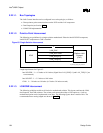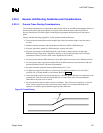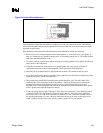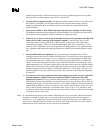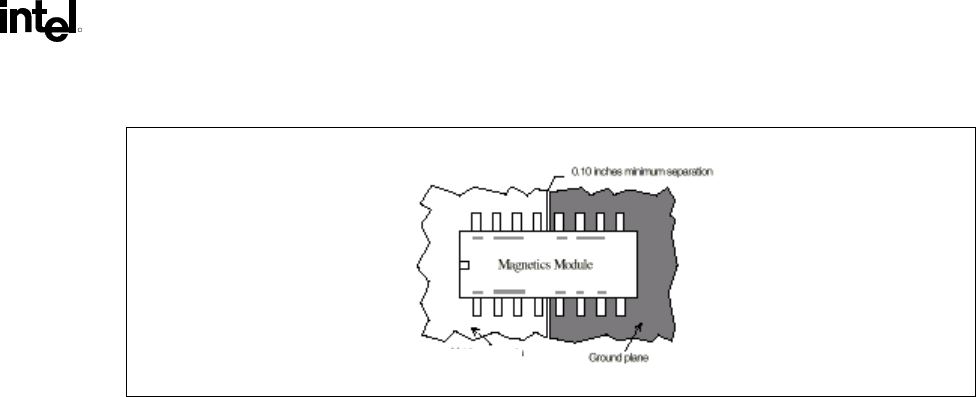
Intel
®
820E Chipset
R
Design Guide 109
Figure 69. Ground Plane Separation
Separate Chassis Ground Plane
Good grounding requires the minimization of inductance levels in the interconnections. EMI radiation
can be reduced significantly by keeping ground returns short, signal loop areas small, and power inputs
bypassed to signal return.
Rules that help reduce backplane and motherboard circuit inductance include the following:
• Route traces over a continuous plane with no interruptions (i.e., don’t route over a split plane). If
there is a vacant area on a ground or power plane, avoid routing signals over it. This would increase
inductance and EMI radiation levels.
• To reduce coupling, separate noisy digital grounds from analog grounds. Noisy digital grounds may
affect sensitive DC subsystems.
• All ground vias should be connected to every ground plane, and every power via should be
connected to all power planes at equal potential. This helps reduce circuit inductance.
• Physically locate grounds between a signal path and its return. This minimizes the loop area.
• Avoid fast rise/fall times whenever possible. Signals with fast rise and fall times contain many high-
frequency harmonics, which can radiate EMI.
• The ground plane beneath the filter/transformer module should be split. The RJ45 and/or RJ11
connector side of the transformer module should have a chassis ground beneath it. Splitting the
ground planes beneath the transformer minimizes noise coupling between the primary and
secondary sides of the transformer and between the adjacent coils in the transformer. There should
not be a power plane under the magnetics module.
• Create a spark gap between pins 2 through 5 of the phone line connector(s) and a shield ground of
1.6 mm (59.0 mil). This requirement is critical to passing the FCC Part 68 test for a phone line
connection. Note: For world-wide certification, a trench of 2.5 mm is required. In North America,
the spacing requirement is 1.6 mm. However, home networking can be used in other parts of the
world, including Europe, where some Nordic countries require the 2.5 mm spacing.






